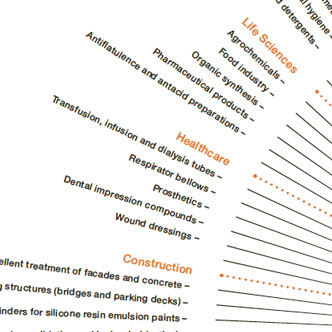New Accounting Standards
The new or revised accounting standards applied for the first time in these consolidated financial statements concern:
- Annual improvements to IFRSs (2010 – 2012 cycle and 2012 – 2014 cycle)
- Amendments to IAS 1 (Disclosure Initiative)
- Amendments to IFRS 11 (Accounting for Acquisitions of Interests in Joint Operations)
These did not, however, have a substantial impact on WACKER’s earnings, net assets or financial position, nor any substantial impact on the presentation of its financial statements. Other standards and interpretations to be applied for the first time are not applicable due to the absence of relevant circumstances.
Accounting Standards / Interpretations Not Applied Prematurely
The International Accounting Standards Board (IASB) has published the following standards, interpretations, and changes to existing standards the application of which is not yet mandatory and which WACKER is not applying earlier than required. Only those standards that are relevant to WACKER are mentioned. WACKER continually evaluates every new standard to determine its impact on the consolidated financial statements.
Accounting Standards Published by the IASB, But Not Yet Applied
|
|||||
Standard / Interpretation |
|
Publication by IASB |
Mandatory from |
Endorsed by EU |
Anticipated Impact on WACKER |
|
|
|
|
|
|
IFRS 14 |
Regulatory Deferral Accounts |
Jan. 30, 2014 |
Jan. 1, 2016 |
Not to be adopted into EU law |
None |
Amendments to IAS 12 |
Recognition of Deferred Tax Assets for Unrealised Losses |
Jan. 19, 2016 |
Jan. 1, 2017 |
Expected in Q2 2017 |
The amendments provide clarification concerning the recognition of deferred tax assets for measurement differences in relation to debt instruments classified as available for sale. Further, the amendments illustrate how to estimate future taxable profit, which serves as evidence of the value of deferred tax assets for loss carryforwards. This change does not have any impact on WACKER’s earnings, net assets or financial position. |
Amendments to IAS 7 |
Statement of Cash Flows – Disclosure Initiative |
Jan. 29, 2016 |
Jan. 1, 2017 |
Expected in Q2 2017 |
The Notes should include a reconciliation – between the opening and closing balances for liabilities arising from financing activities – that discloses cash and non-cash changes. The disclosures in the Notes will be expanded to include this reconciliation. |
IFRS 9 |
Financial Instruments |
July 24, 2014 |
Jan. 1, 2018 |
Nov. 22, 2016 |
The revised version of IFRS 9 introduces a single approach to the classification and measurement of financial assets. This approach is driven by cash flow characteristics and the business model in line with which the assets are managed. Further, the standard provides a new impairment model that is based on expected credit losses. IFRS 9 also introduces new rules for hedge accounting with enhanced focus on an entity’s risk management activities, especially with regard to managing non-financial risks. WACKER is currently examining the impact of applying IFRS 9 to its consolidated financial statements. We expect any impact on earnings, net assets and financial position to be insignificant in scope. Our disclosure obligations will increase. |
IFRS 15 |
Revenue from Contracts with Customers |
May 28, 2014 |
Jan. 1, 2018 |
Sept. 22, 2016 |
IFRS 15 sets out that an entity shall recognize revenue whenever the customer obtains control of, and can draw an economic benefit from, the promised goods and services. The transfer of significant risks and rewards of ownership is no longer of primary importance, as was still the case under the old IAS 18 “Revenue” rules. Revenue must be recognized in an amount that reflects the consideration to which an entity expects to be entitled. The new model provides a five-step framework for recognizing revenue, which first identifies the contract with a customer and the performance obligations it entails, and then determines and allocates the transaction price. The revenue must be recognized for each individual performance obligation when the customer obtains control of the good or service. WACKER is currently looking into the impact of the new standard. Its effects cannot be determined at present. The new standard will result in broader disclosure details in WACKER’s financial statements. |
Amendments to IFRS 15 |
Clarification of IFRS 15 |
April 12, 2016 |
Jan. 1, 2018 |
Q2 2017 |
None |
Amendments to IFRS 2 |
Classification and Measurement of Share-based Payment Transactions |
June 20, 2016 |
Jan. 1, 2018 |
2nd half of 2017 |
None |
Amendment to IFRS 4 |
Application of IFRS 9 in conjunction with IFRS 4 |
Sept. 12, 2016 |
Jan. 1, 2018 |
2017 |
None |
IFRS 16 – Leases |
Lease accounting |
Jan. 13, 2016 |
Jan. 1, 2019 |
2nd half of 2017 |
The new standard requires all lease arrangements held by the lessee to be recognized as finance transactions. A lease arrangement gives the lessee control over the use of an asset for a period of time in exchange for a consideration. Under the new definition, a leasing arrangement embedded in a supply contract for goods (IFRIC 4) should no longer be treated as a finance lease. In the future, a right-of-use is to be capitalized and the corresponding obligation posted as a liability. Straight-line depreciation of the right-of-use asset and application of the effective interest method to the liability result in depreciation and interest expense. In the Notes, WACKER currently reports operating lease obligations totaling €185 million. As yet, we have not evaluated the impact of the new standard. Under the new standard, disclosures will be more extensive in the Notes to WACKER’s financial statements. |
Amendments to IFRS 10 and IAS 28 |
Sale or Contribution of Assets between an Investor and Its Associate or Joint Venture |
Sept. 11, 2014 |
Postponed |
Postponed – awaiting IASB exposure draft |
None |
Amendments to IAS 40 |
Transfers of Investment Property |
Dec. 8, 2016 |
Jan. 1, 2018 |
2nd half of 2017 |
None |
Annual improvements |
Annual improvements to IFRS Standards (2014 – 2016) |
Dec. 8, 2016 |
Jan. 1, 2017 / Jan. 1, 2018 |
2nd half of 2017 |
None |
IFRIC 22 |
Foreign Currency Transactions and Advance Consideration |
Dec. 8, 2016 |
Jan. 1, 2018 |
2nd half of 2017 |
The interpretation determines the exchange rate to be used on initial recognition of a foreign currency transaction in an entity’s functional currency when the entity pays or receives consideration in advance for the related asset, expense or income (or parts thereof). WACKER makes investment-related advance payments to a minor extent only. The advance payments received for polysilicon deliveries were all denominated in euros. Other advance payments are made on only a minor scale. As yet, we have not evaluated the clarification’s impact. We expect only a marginal change in earnings, net assets and financial position. |









